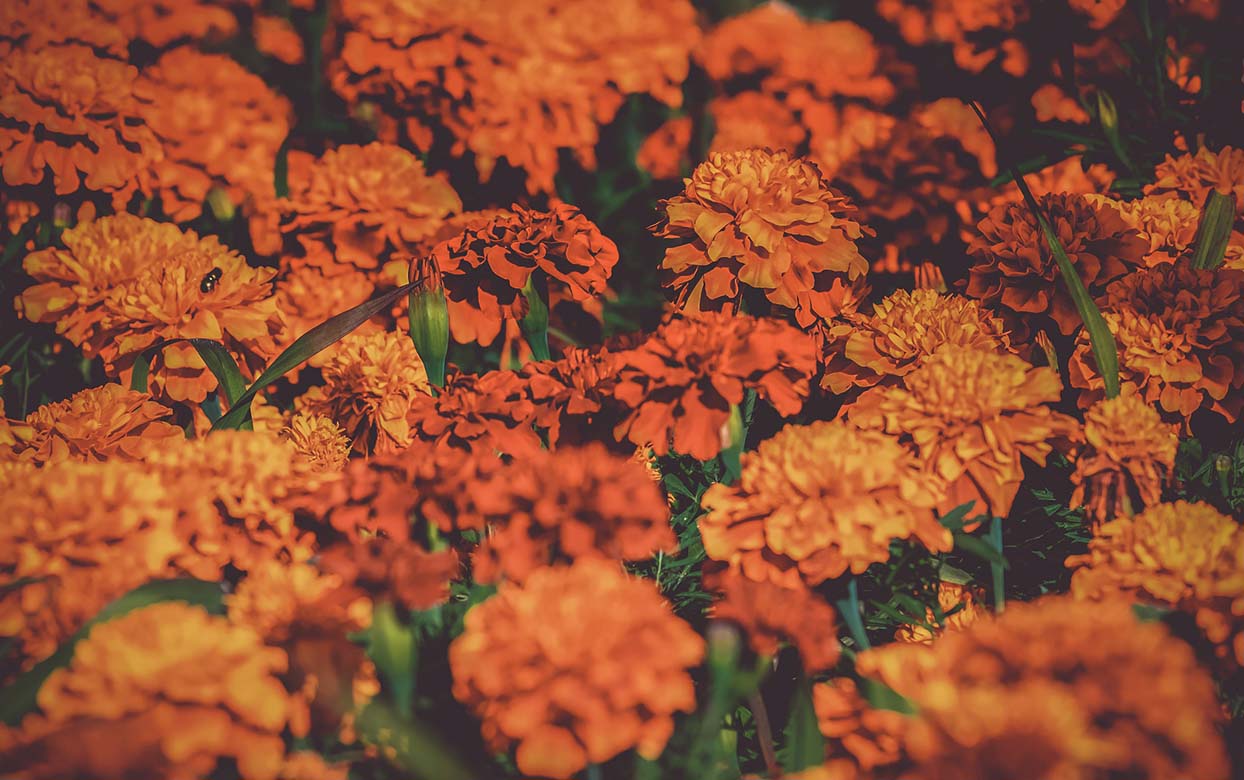Día de Muertos, or Day of the Dead, is one of the most important celebrations in Mexico.
The tradition traces back to more than thousands of years before Spanish settlers arrived. The holiday commemorates deceased loved ones by honoring and remembering them through altars or ofrendas.
Each year, Mexican families gather before Nov. 1 to decorate their altars with photographs, sugar skulls, food, candles and marigolds, or cempasúchil (sam-pah-sue-cheel), as they are commonly known in Mexico.
An altar isn’t complete without the display of thousands of orangey golden marigolds that bring life to this celebration of passed loved ones. The vibrant color of the flowers is even more striking with the warm hues of candle lights that surround it. There’s a reason the marigold resembles the essence of Día de Muertos. And it’s a sight to behold.
The relationship between marigolds, or cempasúchil, and Día de Muertos runs deep.
The celebration traces back to pre-Hispanic Aztec rituals tied to the goddess Mictecacihuatl, or the Lady of the Dead. The story goes that Mictecacihuatl allowed spirits to travel back to earth to reconnect with their family members. The fragrance, which is a musky smell, from marigolds is said to lead souls from their burial place to their family homes. Throughout the years, this tradition adopted Roman Catholic aspects from Spaniards who conquered Mexico.
Cempasúchil is the Aztec name of the marigold flower native to Mexico (Tagetes erecta).
There are other flowers used for the holiday like chrysanthemums, cockscombs or gladiolas. But none are as memorable as the marigold.
After a two-year hiatus, the Garden is bringing back a reimagined Día de Muertos celebration on Oct. 29-30. This year, the Garden is incorporating a Mega Altar that will encompass the entire space of Webster Auditorium. The altar will be designed by Mexican artisan group Taller Ruíz López.
The Garden’s Mega Altar will be adorned with 200 handmade ceramic skulls, 600 feet of papel picado, or perforated paper, a colorful sandpainting, more than 100 handmade ceramic altar elements and of course marigolds. Guests will be greeted with an entryway arch filled with more than 4,000 handmade paper flowers. The altar will be on display Oct. 26 and through Nov. 6. It’s an event you don’t want to miss! Bring the entire family.
Get your tickets for Día de Muertos at the Garden at dbg.org.
